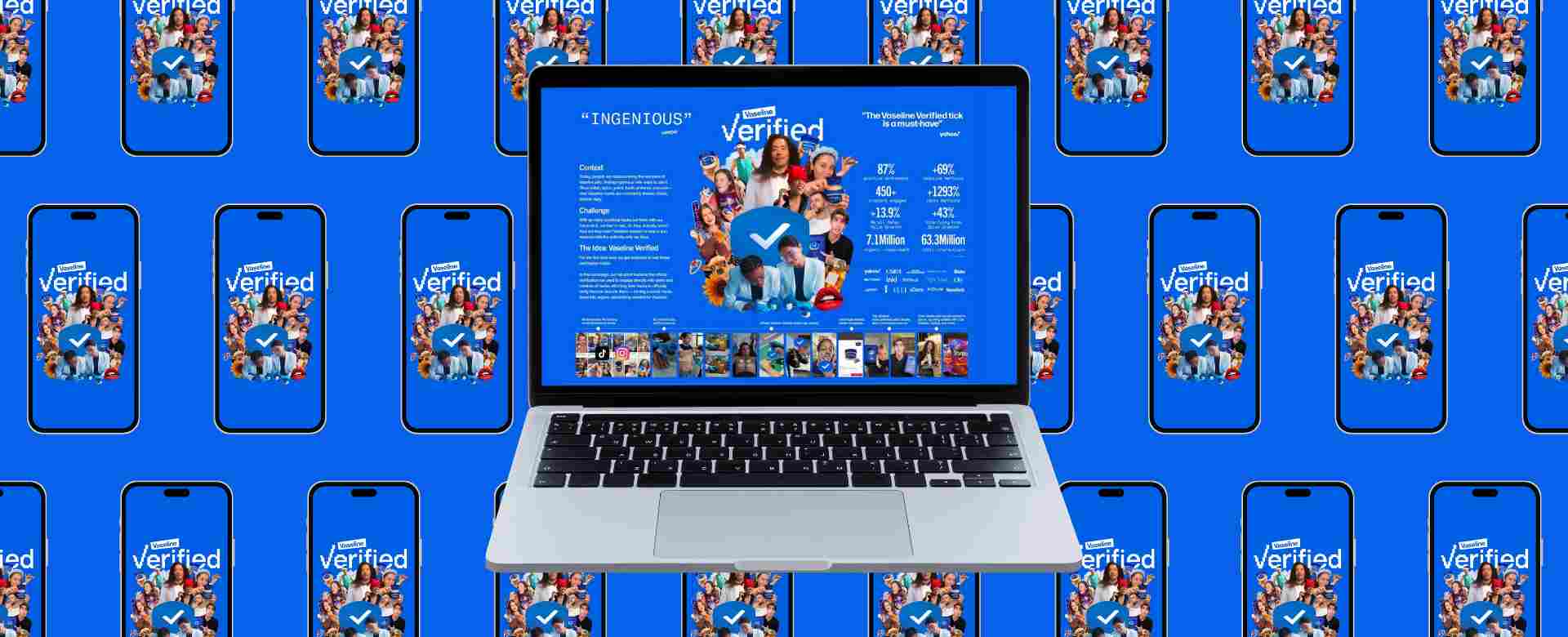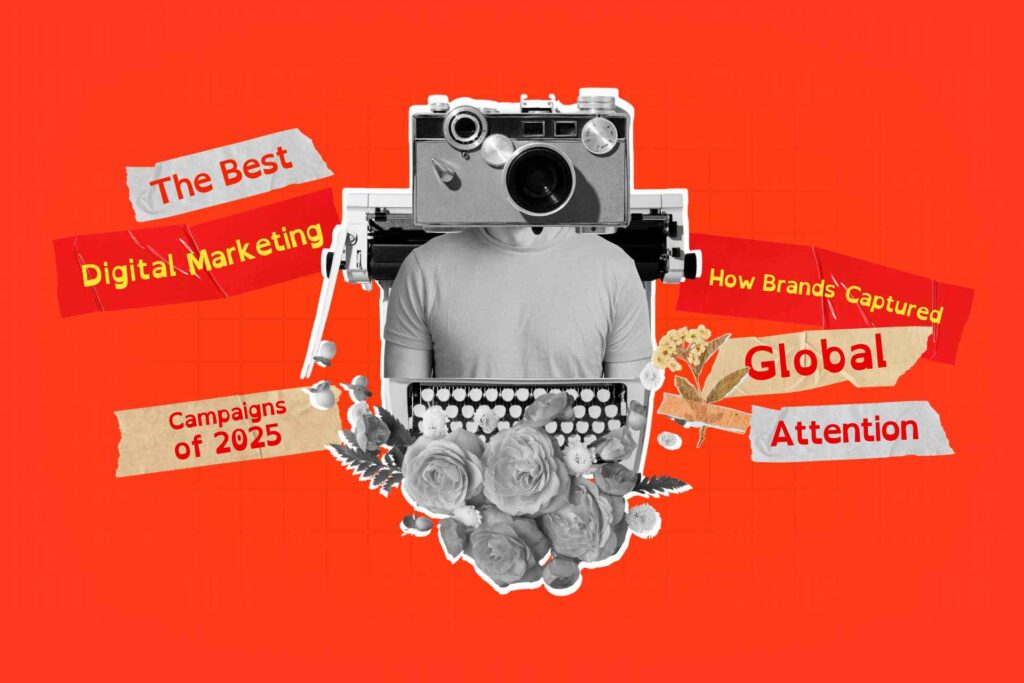Virality in 2025 isn’t what it used to be. It’s no longer about who can shout the loudest or create a meme the fastest. What really works now are ideas that earn attention, stories that blend human insight with tech fluency, play inside culture instead of around it, and make audiences feel like co-authors, not targets.
From AI ethics to gaming crossovers, the first six months of 2025 showed how smart brands turned participation into persuasion. Let’s look into seven campaigns that did it best, and what they reveal about how consumers think, share, and connect today.
1. Vaseline — Vaseline Verified (Unilever / Ogilvy Singapore)
For a brand that’s been around for over a century, Vaseline found a refreshingly modern way to stay relevant: by treating user content as its R&D lab. The campaign sifted through thousands of DIY skincare “hacks” online, tested them in real labs, and awarded a “Vaseline Verified” badge to the ones that actually worked.
Instead of mocking influencers, Vaseline collaborated with them, turning curiosity and skepticism into an interactive validation loop. Viewers watched bite-sized verdict videos and shared the “wins,” fueling more submissions.
Why it mattered: It proved that user-generated content isn’t competition; its raw creative input. For marketers, this was a masterclass in co-creation with credibility. When audiences feel seen, they stop scrolling and start contributing.

2. WhatsApp — Not Even WhatsApp (Meta / West BBDO)
Privacy isn’t an easy thing to dramatize. But WhatsApp made it emotionally real by reminding users that “not even WhatsApp” can read their messages. The campaign turned a tech claim into a human story, using translucent installations, personal chat scenarios, and regional ambassadors like Aamir Khan to make encryption feel relatable, not abstract.
Why it mattered: It tackled a global tension, trust, through local voices and everyday intimacy. The insight? Even in a data-driven age, belief beats explanation. For digital marketers, this was a reminder that storytelling works best when it simplifies the invisible.

3. Apple — Shot on iPhone: Little Garlic (TBWA\Media Arts Lab)
Apple doesn’t chase trends; it builds consistency into culture. Its “Shot on iPhone” series in 2025 doubled down on pure craft, cinematic short films like Little Garlic that blurred the line between product demo and art.
No gimmicks, no hashtags, just exceptional filmmaking that proved its own point: creativity is the best advertisement.
Why it mattered: Amid the chaos of short-form virality, Apple stayed slow, confident, and deliberate. The campaign reminded marketers at every digital marketing agency that creative equity compounds over time, that you don’t always need a “moment” if your work itself is the moment.
4. Dove — Real Beauty Redefined for the AI Era (Ogilvy New York)
Dove’s ongoing commitment to “real beauty” met the generative AI revolution head-on. The brand exposed how AI tools are quietly reshaping beauty standards, creating hyperreal faces that distort what authenticity even means. Then it offered a counterpoint: a campaign built on real stories and unedited images.
Why it mattered: Dove didn’t just sell soap; it sold trust in a world of filters. For any branding agency paying attention, this was a case study in staying culturally fluent. Purpose still works, but only when it evolves with the conversation, not after it.
5. Hyundai — Night Fishing (Paname 24 / Innocean)
Few brands can turn a car commercial into a cultural event, but Hyundai pulled it off. Night Fishing was a cinematic short rooted in Korean mythology, released like a film premiere, complete with festival screenings, theatrical cuts, and social tie-ins.
It wasn’t a sales pitch. It was a mood.
Why it mattered: In an era where feeds are flooded with hyper-optimized clips, Hyundai bet on emotion and scale. The takeaway for marketers? Storytelling that feels bigger than the product still commands attention, especially when it’s made to be discussed, not just watched.
6. AXA — Three Words (Publicis Conseil)
Insurance ads rarely stick, but AXA’s “Three Words” campaign did by doing less. It boiled complex financial promises into a simple, repeatable ritual, three words that encapsulated reassurance. That clarity made it human.
Through short films and activations, people were invited to finish or personalize the phrase, giving ownership to the message.
Why it mattered: Simplicity scales. In categories buried in jargon, being understood is more powerful than being detailed. For every social media marketing agency trying to humanize technical products, AXA proved that memorability often comes down to rhythm and emotion, not rational proof.
7. Mercado Livre — Call of Discounts (Gut São Paulo)
This one showed how e-commerce can play like entertainment. Mercado Livre merged gaming culture with shopping, turning discounts into interactive “events” that played out across social and streaming platforms.
By tapping into gaming rituals, humor, and influencers, the brand transformed sales into a social happening.
Why it mattered: It met users where they already were, instead of pulling them into another funnel. For marketers, this reinforced a growing truth, engagement isn’t a format, it’s a context. And gaming, for Gen Z and Gen Alpha, is no longer niche; it’s cultural currency.
What These Campaigns Tell Us About 2025

Notice the pattern? The biggest viral hits weren’t accidents, they were designed to feel organic. They built communities, not just impressions. And they shared five big lessons for anyone shaping brand strategy right now:
- Start with what people already do. Vaseline and Mercado Livre thrived because they worked with audience behavior, not against it.
- Translate complexity into clarity. WhatsApp and AXA simplified abstract ideas into emotional language.
- Respect context over channel. It wasn’t about being “on TikTok”, it was about being in culture.
- Evolve purpose with the times. Dove and Hyundai showed how legacy brands can stay relevant by reframing old missions for new realities.
- Let craft carry credibility. Apple proved that polish and patience still matter, especially in a world drowning in quick content.
Where Social Storytelling Is Headed Next
If the first half of 2025 is any indication, the next wave of social creativity will belong to brands that make participation the message. Not forced hashtags or contests, but genuine community authorship, content loops where the brand is the stage, not the actor.
Audiences are rewarding honesty, humor, and effort. They can spot inauthenticity faster than algorithms can optimize it. And they’re gravitating toward campaigns that feel like cultural contributions, not campaigns at all.
So what’s next? Expect smaller, smarter ideas, micro-moments built on truth and tension rather than spectacle. Because as this year’s work proved, the most viral stories don’t spread because they’re loud. They spread because they feel ours.
FAQ
1. Which brands created the biggest viral campaigns this year?
Some of the standout viral campaigns of 2025 came from Vaseline, WhatsApp, Apple, Dove, Hyundai, AXA, and Mercado Livre. Each of these brands used different creative levers, from Vaseline’s user-powered “Vaseline Verified” lab to Dove’s cultural conversation about AI and beauty, but they shared a common thread: they built stories people wanted to share. The smartest digital marketing agencies today aren’t chasing algorithms; they’re creating work that earns attention through cultural relevance and emotional clarity.
2. What was the first viral marketing campaign?
The term “viral marketing” first gained traction in the early 2000s, but one of the earliest examples dates back to the late ’90s, Hotmail’s “Get your free email” tagline at the bottom of every message. It spread like wildfire because users unknowingly became brand messengers. That simple mechanic set the stage for everything we see today: participation, network effects, and social proof. What modern branding agencies do now is take that same principle and layer it with creativity, data, and storytelling to scale human behavior at speed.
3. What made these viral campaigns so successful?
The best viral campaigns of 2025 worked because they respected the audience’s intelligence. They weren’t loud; they were lived in. Vaseline built on user curiosity, WhatsApp simplified trust, and Dove challenged AI’s distortion of beauty. Each campaign tapped into existing cultural energy instead of trying to manufacture it. That’s what great marketing social media agencies understand, real virality comes from empathy and timing, not just reach or media spend.
4. How do viral social campaigns boost brand awareness?
Viral campaigns don’t just increase impressions; they change perception. When a story feels relevant enough to share, it stops being an ad and starts being a cultural reference point. That’s brand equity in motion. For a digital marketing agency, virality is less about “going big” and more about being talked about for the right reasons. Done well, these campaigns turn visibility into credibility and that’s what drives long-term brand growth.
5. Are viral campaigns more effective on TikTok, Instagram, or YouTube?
There isn’t a single winning platform anymore. TikTok dominates cultural speed, Instagram refines aesthetic storytelling, and YouTube sustains long-form engagement. The most successful campaigns of 2025, from Apple’s cinematic storytelling to Mercado Livre’s gaming tie-ins, didn’t pick one; they tailored the message to each. Smart branding agencies focus on context over channel: they create adaptable ideas that can live naturally wherever the audience already is.

